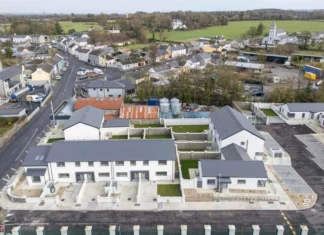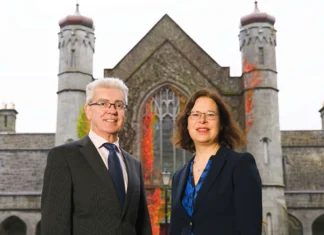Galway County Council spends eight times less per person than Dublin City Council on housing, new research has revealed.
A new online platform developed by researchers Dr Gerard Turley and Stephen McNena at NUI Galway allows taxpayers to see how their money is spent locally.
This revealed that there are huge differences between local council spend and income but this is not unexpected, given the variations in the profile, circumstances and choices of the different areas and their constituents.
The website shows that per person, Dublin City Council spends €686 on housing compared to €86 in Galway County Council.
Other differences between councils can be found in spending in recreation and amenities, where per capita, spending ranges from €223 in Galway City Council to €44 in Meath County Council.
Aimed at improving transparency and accountability but also at informing the public on how local councils raise and spend taxpayers’ money, the website can be used to readily access individual council income and spending budgets.
It can also show cross-council comparisons with a view to identifying best and worst performing councils.
Among other explanations, differences in local authority spending can be accounted for by variations in expenditure needs, arising from differences in the socio-economic and demographic profile of the area and its population.
Of the eight functional areas that local councils provide, four service divisions account for 75 per cent of total current spending.
The national average spend per person in 2019 for each of these service divisions are €351 for housing, €208 for roads, €152 in environmental services and €102 in recreation and amenities.
Across the 31 local authorities there are sizeable differences in terms of how much councils spend per person, with the highest and lowest spend per head in Dublin City Council and Meath County Council, at €1,751 and €635 per inhabitant respectively.
On roads, the range is €396 in Leitrim County Council to €92 in Fingal County Council.
For environmental services, including the fire service and street cleaning, Dublin City Council spends €362 per person whereas Meath County Council spends €84 per person.
Dr Gerard Turley, Whitaker Institute at NUI Galway, said: “As for spending changes over time, in general it is the more urban, eastern local authorities that have witnessed the largest increases in day-to-day spending since the last local elections, with the more rural local authorities experiencing the smallest increases and even some recording reductions in spending since 2014.
“In contrast, all local authorities experienced reductions in current (and even more so in capital) spending between the local elections of 2009 and 2014, coinciding with the years of austerity.
“Notwithstanding the recovery in the general economy since the last local elections, the issue of the rural/urban divide remains a serious challenge for our policymakers, both local and national.”
Funding sources also differ, reflecting differences in tax bases and economic activity.
Stephen McNena, Whitaker Institute at NUI Galway, explains: “As most tax revenue for local councils is in the form of commercial rates and not local property tax, we looked at the commercial rate called the Annual Rate on Valuation (ARV), for 2019.
“For those local councils that have not revalued the commercial rates base recently, the tax rate ranges from 79.25 in Kerry County Council to 56.77 in Tipperary County Council.
“Where local councils have undertaken a recent revaluation of industrial and commercial properties liable for commercial rates, the tax rate ranges from 0.2760 in South Dublin County Council to 0.1500 in Fingal County Council.
“Of the four Dublin councils, two of them are amongst the councils that levy the highest commercial rates in the country, but, on the other hand, the other two Dublin councils have the lowest rates nationwide. As for these cross-council differences in the ARV, the rate in 2019 in any local council is a reflection of that council’s rates levied in the past.”













